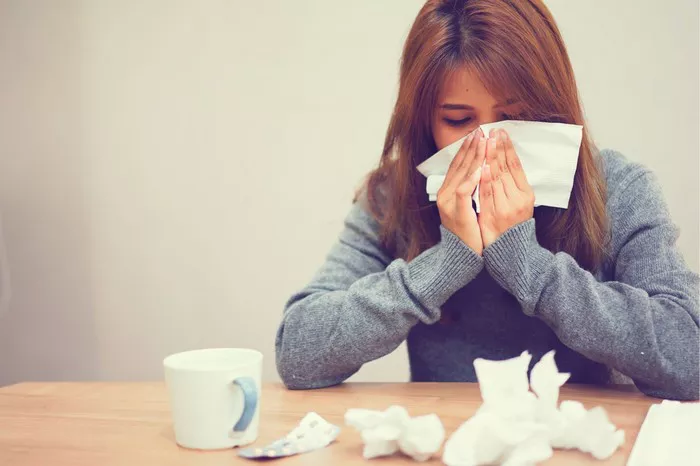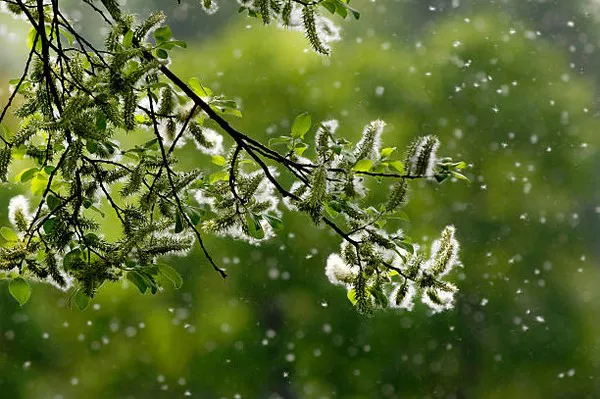Seasonal allergies, also known as allergic rhinitis or hay fever, affect millions of people worldwide, causing symptoms such as sneezing, congestion, itchy eyes, and nasal drainage. These allergies are triggered by exposure to allergens such as pollen, mold spores, and other environmental irritants. For many allergy sufferers, identifying which allergens are currently at high levels can help them better manage their symptoms and take proactive measures to reduce exposure. In this comprehensive guide, we explore the current high allergy seasons for various allergens, providing valuable insights for individuals seeking relief from seasonal allergies.
Understanding Seasonal Allergies: A Primer
Before delving into specific high allergy seasons, it’s essential to understand the basics of seasonal allergies and how they manifest. Seasonal allergies occur when the immune system reacts to airborne allergens, mistaking them for harmful invaders. This immune response triggers the release of histamine and other inflammatory chemicals, leading to the characteristic symptoms of allergic rhinitis.
Common symptoms of seasonal allergies include:
1. Sneezing
2. Runny or stuffy nose
3. Itchy or watery eyes
4. Scratchy throat
5. Coughing
6. Fatigue
These symptoms can vary in severity and may interfere with daily activities, sleep, and overall quality of life.
Identifying High Allergy Seasons: A Season-by-Season Guide
Spring Allergies: Pollen Season
Spring is notorious for its high pollen levels, making it a challenging time for many allergy sufferers. Tree pollen, in particular, tends to be prevalent during the spring months, with trees such as oak, birch, cedar, and maple releasing large quantities of pollen into the air. Grass pollen may also become a significant allergen as temperatures rise and grasses begin to pollinate.
Summer Allergies: Grass Pollen and Mold Spores
As temperatures continue to rise during the summer months, grass pollen levels may remain high, triggering allergic reactions in susceptible individuals. Additionally, mold spores thrive in warm, humid conditions, making summer a peak season for mold allergies. Outdoor activities such as mowing the lawn, gardening, and hiking may exacerbate symptoms for those allergic to grass pollen or mold.
Fall Allergies: Ragweed Season
Fall brings its own set of allergens, chief among them being ragweed pollen. Ragweed is a prolific pollen producer, with a single plant capable of releasing millions of pollen grains into the air. Ragweed pollen levels typically peak in late summer and early fall, causing symptoms such as sneezing, congestion, and itchy eyes in allergy sufferers. Mold spores may also remain a concern as humidity levels fluctuate during the transition from summer to fall.
Winter Allergies: Indoor Allergens
While outdoor allergens may diminish during the winter months, indoor allergens can still pose a significant threat to allergy sufferers. Common indoor allergens include dust mites, pet dander, mold, and cockroach droppings. Spending more time indoors with closed windows and doors can exacerbate exposure to these allergens, leading to persistent allergy symptoms throughout the winter season.
Localized Allergy Trends: Geographic Variations
In addition to seasonal variations, allergy levels can also vary depending on geographic location and local environmental factors. Pollen levels, for example, may be influenced by factors such as climate, vegetation, and air quality. Urban areas with high levels of pollution may experience elevated levels of airborne allergens, exacerbating symptoms for allergy sufferers residing in these regions.
Monitoring Allergen Levels: Tools and Resources
To stay informed about current allergen levels and potential triggers, allergy sufferers can utilize a variety of tools and resources:
Pollen Count Reports: Many weather websites and apps provide daily pollen count reports, indicating the levels of various pollen types in a given area. These reports can help individuals plan outdoor activities and take appropriate precautions to minimize exposure to allergens.
Allergy Forecast Maps: Some websites and apps offer allergy forecast maps that provide visual representations of allergen levels across different regions. These maps may include pollen forecasts, mold spore counts, and other relevant information to help allergy sufferers stay informed and prepared.
Local Allergy Clinics: Allergy clinics and healthcare providers may offer allergy testing and monitoring services to help individuals identify specific allergens and develop personalized treatment plans. These clinics may also provide information about local allergen trends and seasonal triggers.
Community Resources: Local health departments, environmental organizations, and allergy advocacy groups may offer resources and educational materials to help individuals manage seasonal allergies. Community-based initiatives, such as pollen monitoring programs or educational workshops, can provide valuable support for allergy sufferers.
Managing Seasonal Allergies: Tips for Relief
While it may not be possible to completely avoid allergens, there are several strategies individuals can employ to reduce exposure and alleviate symptoms:
Limit Outdoor Exposure: On high pollen days, try to limit outdoor activities, especially during peak pollen hours (typically mid-morning to early afternoon). Keep windows and doors closed, and use air conditioning to filter indoor air.
Use Allergy-Proofing Measures: Implement allergy-proofing measures in your home, such as using allergen-proof mattress and pillow covers, regularly vacuuming carpets and upholstery, and keeping pets out of bedrooms.
Try Over-the-Counter Medications: Over-the-counter antihistamines, decongestants, and nasal corticosteroids can help relieve allergy symptoms. Consult with a healthcare provider or pharmacist to determine the best medication regimen for your specific needs.
Consider Allergy Immunotherapy: Allergy immunotherapy, such as allergy shots or sublingual immunotherapy (SLIT), can help desensitize the immune system to specific allergens, reducing the severity of allergic reactions over time.
Seek Professional Advice: If over-the-counter remedies are not providing sufficient relief, consult with a healthcare provider or allergist for further evaluation and treatment options. Allergy testing may be recommended to identify specific allergens and develop a personalized treatment plan.
Conclusion: Navigating Allergy Seasons with Knowledge and Preparation
In conclusion, staying informed about current high allergy seasons and potential triggers can empower individuals to take proactive measures to manage seasonal allergies and alleviate symptoms. By monitoring allergen levels, implementing allergy-proofing measures, and seeking appropriate medical treatment, allergy sufferers can minimize the impact of seasonal allergies on their health and quality of life. With knowledge, preparation, and effective management strategies, individuals can navigate the allergy seasons with greater confidence and comfort, enjoying the beauty of nature without the burden of allergic rhinitis.
[inline_related_posts title=”You Might Be Interested In” title_align=”left” style=”list” number=”6″ align=”none” ids=”7631,7628,7243″ by=”categories” orderby=”rand” order=”DESC” hide_thumb=”no” thumb_right=”no” views=”no” date=”yes” grid_columns=”2″ post_type=”” tax=””]

































